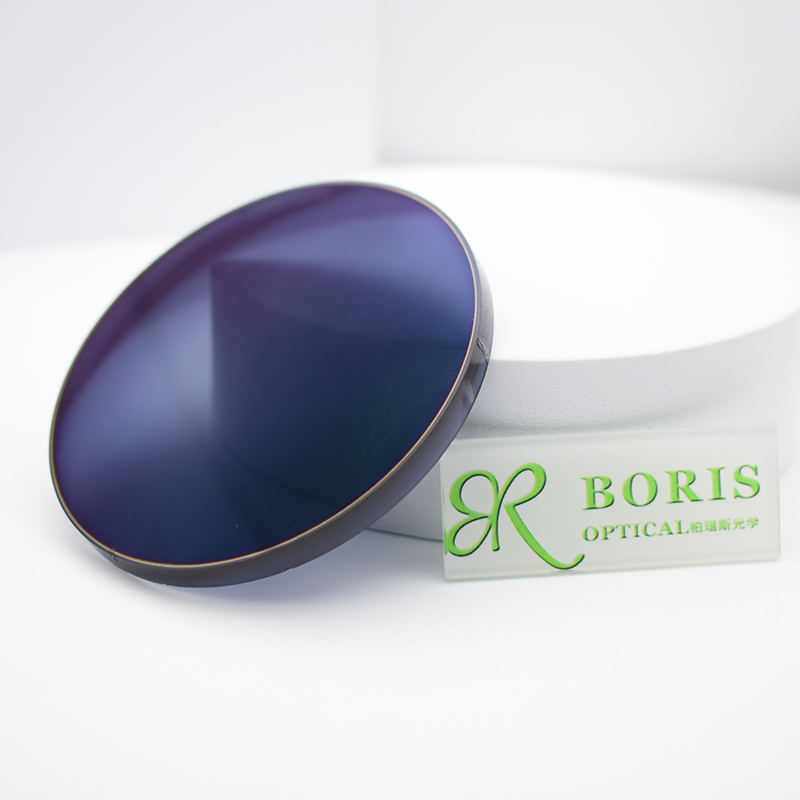1.56 Photo Colorful HMC Optical lenses

Production Details
| Place of Origin: | Jiangsu | Brand Name: | BORIS |
| Model Number: | Photochromic Lens | Lenses Material: | SR55 |
| Vision Effect: | Single Vision | Coating Film: | HC/HMC/SHMC |
| Lenses Color: | White(indoor) | Coating Color: | Green/Blue |
| Index: | 1.56 | Specific Gravity: | 1.26 |
| Certification: | CE/ISO9001 | Abbe Value: | 38 |
| Diameter: | 75/70/65mm | Design: | Asperical |

Photochromic lenses are divided into two types: substrate photochromic lenses (referred to as "monomer photo grey") and film-layer photochromic lenses (referred to as "spin coating") according to the different parts of the lens.
The substrate photochromic lens is a chemical substance added with silver halide in the lens substrate. Using the ionic reaction of silver halide, it is decomposed into silver and halogen under strong light stimulation to color the lens. After the light becomes weak, it is combined into silver halide. , the color becomes lighter. Glass photochromic lenses use this technology.
Coated photochromic lenses are specially treated in the lens coating process. For example, spiropyran compounds are used to perform high-speed spin coating on the surface of the lens. According to the intensity of light and ultraviolet rays, the inversion opening and closing of the molecular structure itself is used to achieve the effect of passing or blocking light.
Production Introduction
When choosing Photochromic lenses, it is mainly considered from the functional characteristics of the lens, the use of the glasses, and the individual's requirements for color. Photochromic lenses can also be made into a variety of colors, such as gray, brown and so on.
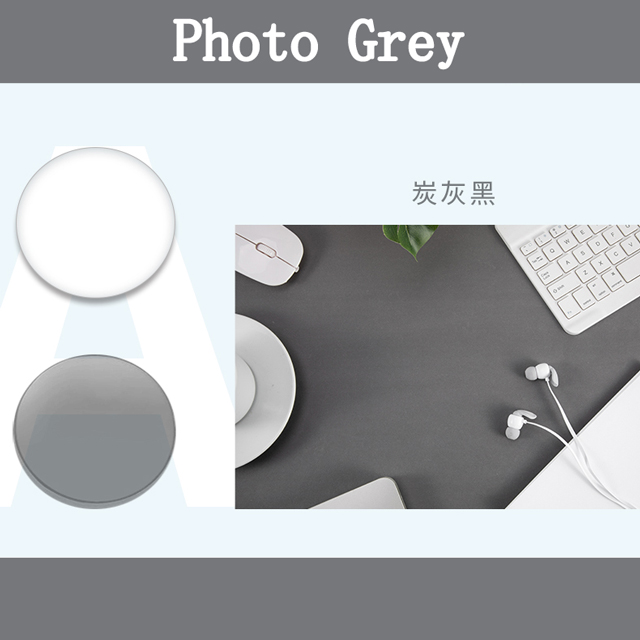
1.Gray lens: can absorb infrared rays and 98% of ultraviolet rays. The biggest advantage of the gray lens is that the original color of the scene will not be changed by the lens, and the most satisfying thing is that it can reduce the light intensity very effectively. The gray lens can evenly absorb any color spectrum, so the viewing scene will only darken, but there will be no obvious chromatic aberration, showing a true natural feeling. It is a neutral color, suitable for all people.
2.Pink lenses: This is a very common color. It absorbs 95% of UV rays. If it is used as glasses for vision correction, women who must wear them often should choose light red lenses, because the light red lenses have better absorption of ultraviolet rays and can reduce the overall light intensity, so the wearer will feel more comfortable.
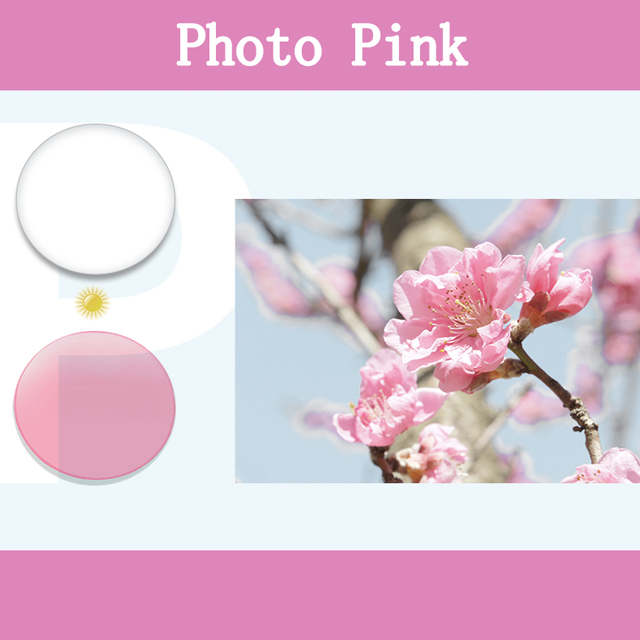
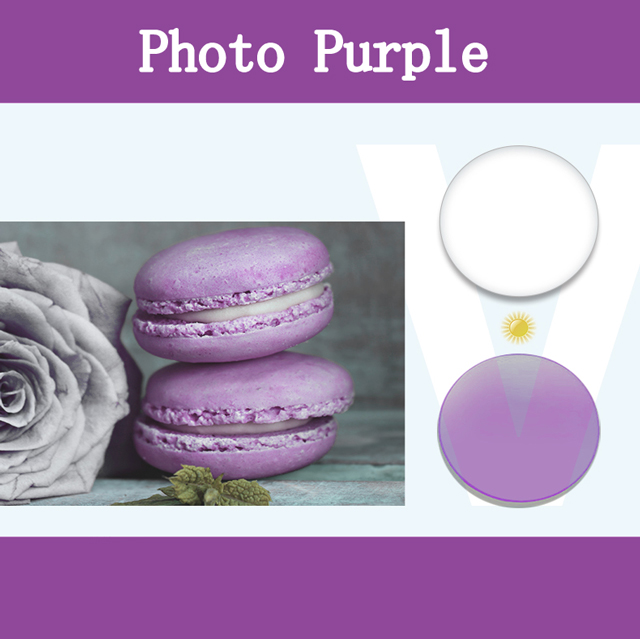
3. Light purple lenses: Like pink lenses, they are more popular with mature women because of their relatively darker color.
4.Brown lens: It can absorb 100% of ultraviolet rays, and the brown lens can filter out a lot of blue light, which can improve visual contrast and clarity, so it is very popular among wearers. Especially in the case of serious air pollution or fog, the wearing effect is better. Generally, it can block the reflected light of the smooth and bright surface, and the wearer can still see the fine part, which is the ideal choice for the driver. For middle-aged and elderly patients with high vision above 600 degrees, priority can be given.
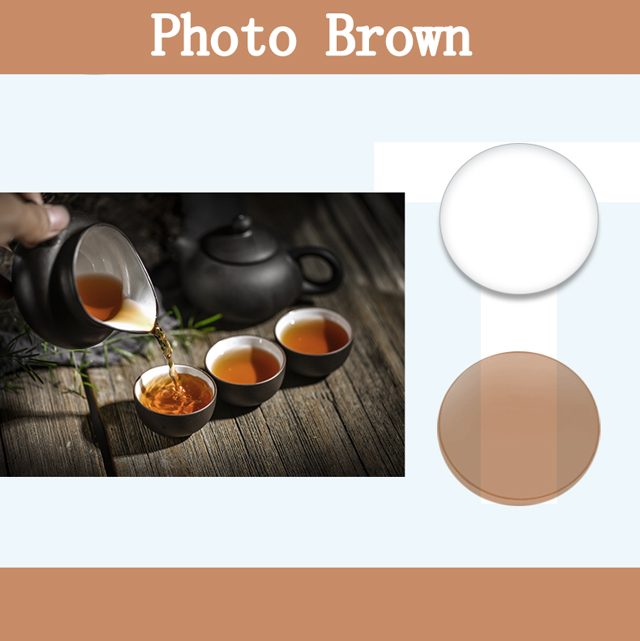
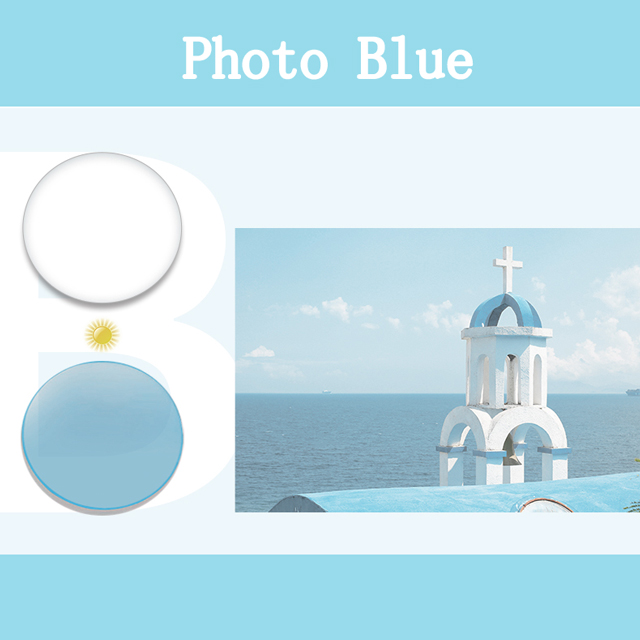
5.Light blue lenses: Sun blue lenses can be worn when playing on the beach. The blue can effectively filter out the light blue reflected by the sea and the sky. Blue lenses should be avoided when driving because it can make it difficult for us to distinguish the color of traffic signals.
6. Green lens: The green lens can effectively absorb infrared light and 99% of ultraviolet rays, just like the gray lens. While absorbing light, it maximizes the green light reaching the eyes, so it has a cool and comfortable feeling and is suitable for people who are prone to eye fatigue.
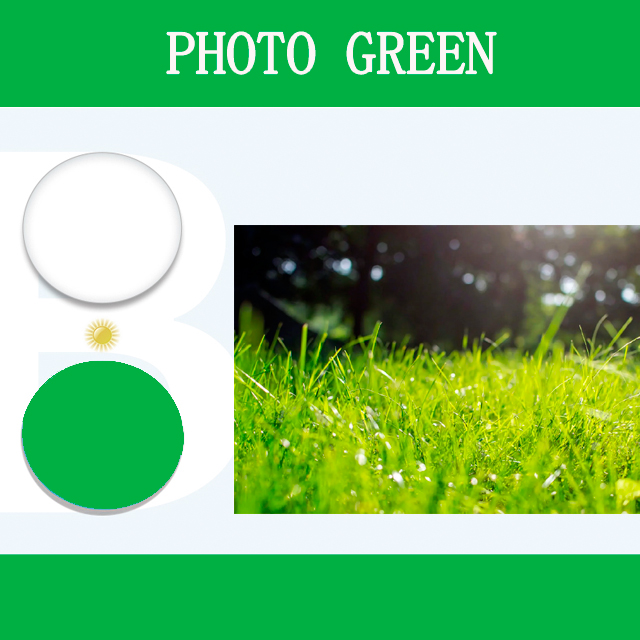

7. Yellow lens: It can absorb 100% of ultraviolet rays, and can let infrared rays and 83% of visible light penetrate the lens. The biggest feature of yellow lenses is that they absorb most of the blue light. Because when the sun shines through the atmosphere, it mainly appears as blue light (which can explain why the sky is blue). After the yellow lens absorbs blue light, it can make the natural scenery clearer. Therefore, the yellow lens is often used as a "filter" or used by hunters when hunting. Strictly speaking, such lenses are not sun lenses because they hardly reduce visible light, but in foggy and twilight times, yellow lenses can improve contrast and provide more accurate vision, so they are also called night vision goggles. Some young people wear yellow lens "sunglasses" as decoration, which is an option for those with glaucoma and those who need to improve visual brightness.
With the needs of modern life, the role of tinted glasses is not only the role of eye protection, it is also a work of art. A suitable pair of tinted glasses and suitable clothing can bring out a person's extraordinary temperament.
Product Process






